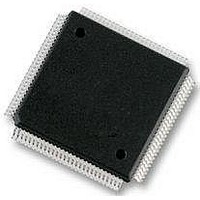MC9S12E128CPV Freescale Semiconductor, MC9S12E128CPV Datasheet - Page 411

MC9S12E128CPV
Manufacturer Part Number
MC9S12E128CPV
Description
Microcontrollers (MCU) 16 Bit 16MHz
Manufacturer
Freescale Semiconductor
Datasheet
1.MC9S12E128CPV.pdf
(606 pages)
Specifications of MC9S12E128CPV
Data Bus Width
16 bit
Program Memory Type
Flash
Program Memory Size
128 KB
Data Ram Size
8 KB
Interface Type
SCI, SPI
Maximum Clock Frequency
25 MHz
Number Of Programmable I/os
92
Number Of Timers
16 bit
Operating Supply Voltage
3.135 V to 5.5 V
Maximum Operating Temperature
+ 85 C
Mounting Style
SMD/SMT
Package / Case
LQFP-112
Minimum Operating Temperature
- 40 C
On-chip Adc
10 bit
On-chip Dac
8 bit, 2 Channel
Lead Free Status / Rohs Status
No RoHS Version Available
Available stocks
Company
Part Number
Manufacturer
Quantity
Price
Company:
Part Number:
MC9S12E128CPVE
Manufacturer:
Freescale Semiconductor
Quantity:
10 000
- Current page: 411 of 606
- Download datasheet (4Mb)
To calculate the output frequency in center aligned output mode for a particular channel, take the selected
clock source frequency for the channel (A, B, SA, or SB) and divide it by twice the value in the period
register for that channel.
As an example of a center aligned output, consider the following case:
Shown below is the output waveform generated.
12.4.2.7
The PWM timer also has the option of generating 6-channels of 8-bits or 3-channels of 16-bits for greater
PWM resolution}. This 16-bit channel option is achieved through the concatenation of two 8-bit channels.
The PWMCTL register contains three control bits, each of which is used to concatenate a pair of PWM
channels into one 16-bit channel. Channels 4 and 5 are concatenated with the CON45 bit, channels 2 and 3
are concatenated with the CON23 bit, and channels 0 and 1 are concatenated with the CON01 bit.
When channels 4 and 5 are concatenated, channel 4 registers become the high-order bytes of the double
byte channel as shown in
registers become the high-order bytes of the double byte channel. When channels 0 and 1 are concatenated,
channel 0 registers become the high-order bytes of the double byte channel.
Freescale Semiconductor
•
•
E = 100 ns
PWMx frequency = clock (A, B, SA, or SB) / (2*PWMPERx)
PWMx duty cycle (high time as a% of period):
— Polarity = 0 (PPOLx = 0)
— Polarity = 1 (PPOLx = 1)
Clock source = bus clock, where bus clock = 10 MHz (100 ns period)
PPOLx = 0
PWMPERx = 4
PWMDTYx = 1
PWMx frequency = 10 MHz/8 = 1.25 MHz
PWMx period = 800 ns
PWMx duty cycle = 3/4 *100% = 75%
Duty cycle = [(PWMPERx-PWMDTYx)/PWMPERx] * 100%
Duty cycle = [PWMDTYx / PWMPERx] * 100%
PWM 16-Bit Functions
Change these bits only when both corresponding channels are disabled.
Figure 12-39. PWM Center Aligned Output Example Waveform
Figure
12-40. Similarly, when channels 2 and 3 are concatenated, channel 2
MC9S12E128 Data Sheet, Rev. 1.07
DUTY CYCLE = 75%
PERIOD = 800 ns
NOTE
Chapter 12 Pulse-Width Modulator (PWM8B6CV1)
E = 100 ns
411
Related parts for MC9S12E128CPV
Image
Part Number
Description
Manufacturer
Datasheet
Request
R
Part Number:
Description:
Manufacturer:
Freescale Semiconductor, Inc
Datasheet:
Part Number:
Description:
Manufacturer:
Freescale Semiconductor, Inc
Datasheet:
Part Number:
Description:
Manufacturer:
Freescale Semiconductor, Inc
Datasheet:
Part Number:
Description:
Manufacturer:
Freescale Semiconductor, Inc
Datasheet:
Part Number:
Description:
Manufacturer:
Freescale Semiconductor, Inc
Datasheet:
Part Number:
Description:
Manufacturer:
Freescale Semiconductor, Inc
Datasheet:
Part Number:
Description:
Manufacturer:
Freescale Semiconductor, Inc
Datasheet:
Part Number:
Description:
Manufacturer:
Freescale Semiconductor, Inc
Datasheet:
Part Number:
Description:
Manufacturer:
Freescale Semiconductor, Inc
Datasheet:
Part Number:
Description:
Manufacturer:
Freescale Semiconductor, Inc
Datasheet:
Part Number:
Description:
Manufacturer:
Freescale Semiconductor, Inc
Datasheet:
Part Number:
Description:
Manufacturer:
Freescale Semiconductor, Inc
Datasheet:
Part Number:
Description:
Manufacturer:
Freescale Semiconductor, Inc
Datasheet:
Part Number:
Description:
Manufacturer:
Freescale Semiconductor, Inc
Datasheet:
Part Number:
Description:
Manufacturer:
Freescale Semiconductor, Inc
Datasheet:











